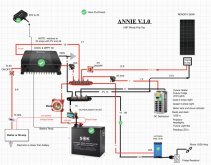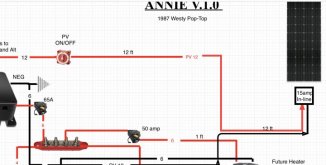Annie C
Keep it simple, for me.
For my 1987 Westy. i am worried about not damaging the 90 amp alternator. No inverter needed yet. Solar panel(s) not bought yet. Space is at premium. Adding 200w to start, either one 200W or two 100w. Looking at Renogy but others you suggest? In Canada so less selection.
have added on/off for alternator power if stop and go driving
have added on/off for alternator power if stop and go driving
Attachments
Last edited:





